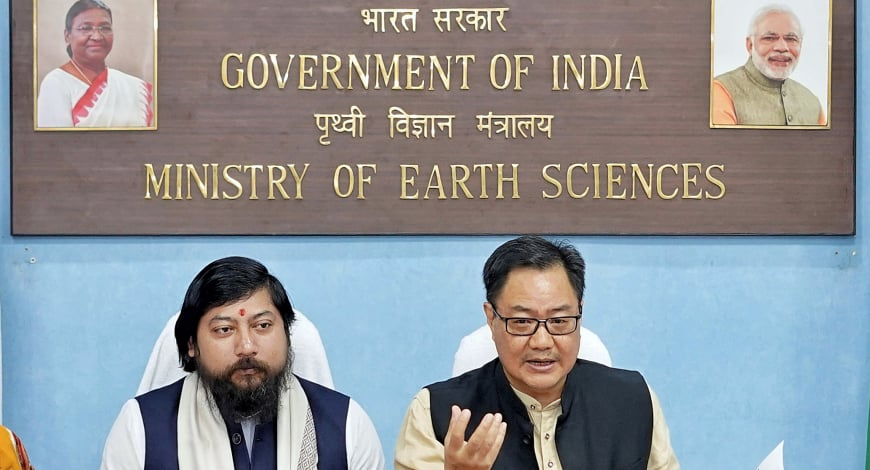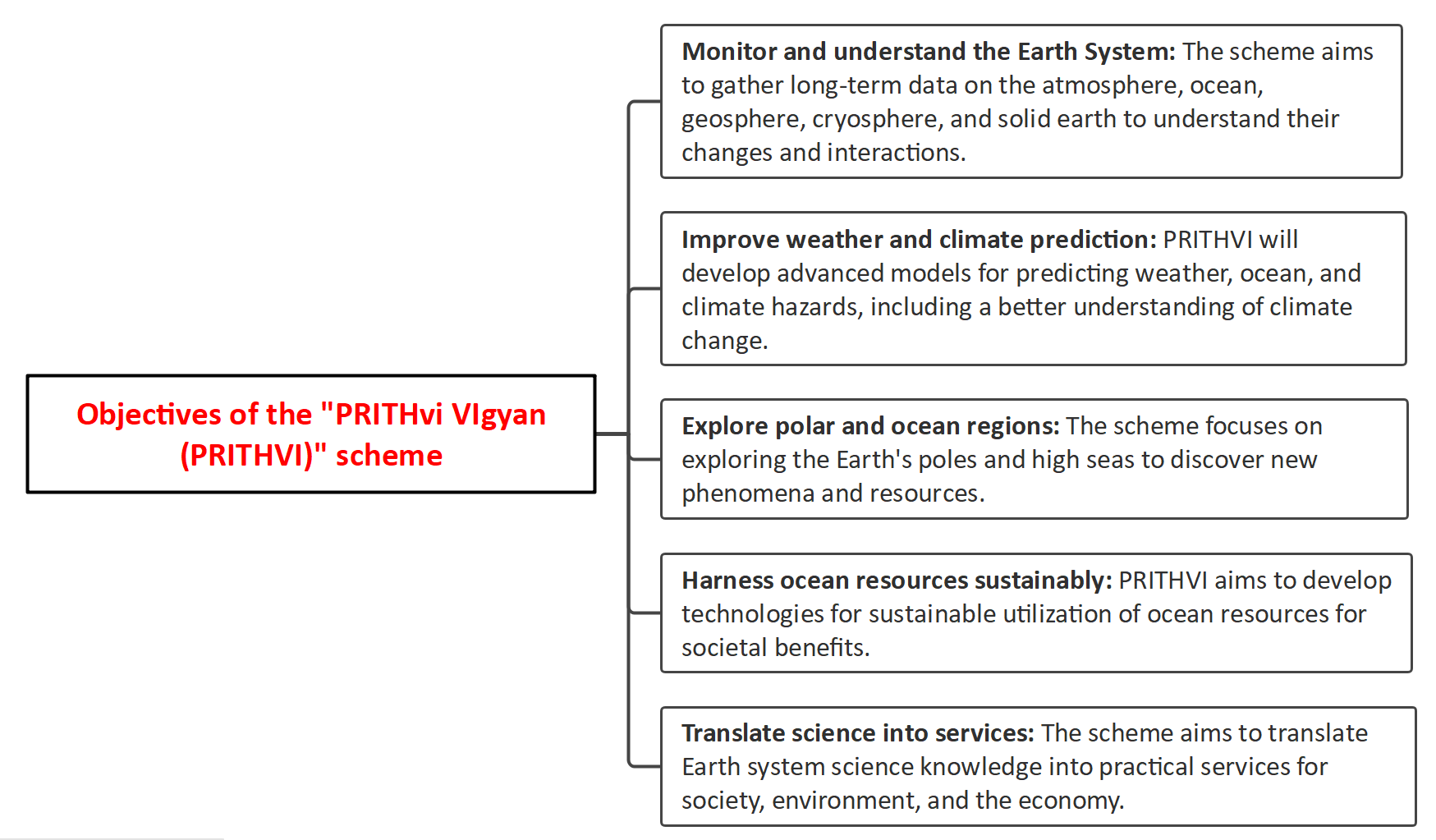Free Courses Sale ends Soon, Get It Now


Free Courses Sale ends Soon, Get It Now



Copyright infringement not intended
Picture Courtesy: www.businessworld.in
Context: The Ministry of Earth Sciences (MoES) has launched a new scheme called “PRITHvi VIgyan (PRITHVI)” to advance the scientific understanding and prediction of various aspects of the Earth system.
Details
ACROSS
O-SMART
PACER
SAGE
REACHOUT
|
MoES is responsible for providing services for weather, climate, ocean and coastal state, hydrology, seismology, and natural hazards; exploring and harnessing marine living and non-living resources in a sustainable manner for the country; and exploring the three poles of the Earth (Arctic, Antarctic and Himalayas). These services include weather forecasts (both on land and in the Oceans) and warnings for various natural disasters like tropical cyclones, storm surges, floods, heat waves, thunderstorms and lightning; alerts for Tsunamis and monitoring of earthquakes. |

Conclusion
|
PRACTICE QUESTION Q. How does the PRITHvi VIgyan (PRITHVI) scheme, introduced by the Ministry of Earth Sciences, contribute to India's efforts in combating climate change and enhancing environmental resilience? |
© 2024 iasgyan. All right reserved